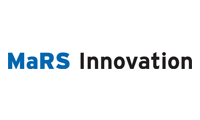Verification and Validation
Both hardware and software components of a medical device must undergo verification and validation testing. The classification of a medical device will dictate the level of verification and validation required to obtain approval or clearance from the FDA, Health Canada, the European Community and other regulatory bodies.
Verification involves testing the medical device (design output) against all product requirements (design input) established in the design and development phase to determine if they are in agreement. Specifically, hardware verification involves evaluating safety and electromagnetic compatibility (EMC), performance of the device, conducting simulations, etc. Software verification is not as clear cut and is subject to international requirements defined in IEC 60601-1-4 and country-specific requirements.
The purpose of validation is to determine if the design of the device is safe and effective and that its specifications conform to the user requirements and intended use of the device.
Depending upon the classification of the device, clinical trials are not necessarily required for regulatory approval. However, most regulatory bodies require clinical evaluation of medical devices either in a simulated or actual operational environment. Validation may also involve additional methods, including methods for analysis, supporting scientific literature and clinical trials.








